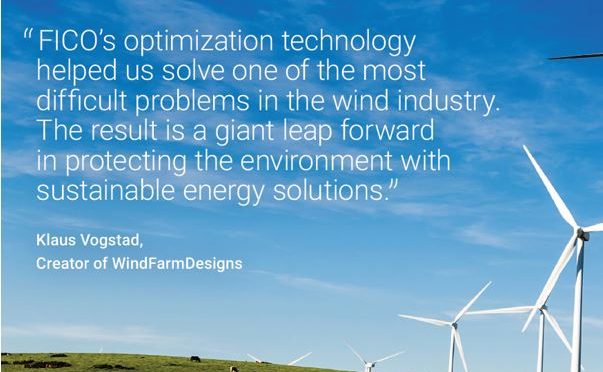Analytics Unleash the Power of Alternative Energy
Blog: Enterprise Decision Management Blog

“The wealth of the nation is its air, water, soil, forests, minerals, rivers, lakes, oceans, scenic beauty, wildlife habitats and biodiversity… that’s all there is. That’s the whole economy. That’s where all the economic activity and jobs come from. These biological systems are the sustaining wealth of the world.” – Gaylord Nelson, former US Senator and founder of Earth Day
When we ponder climate change and alternative energy, the visceral reaction for many of us is not just thinking about our future on this planet, but also our children’s, and that of their children. Even proponents of “staying the course” by focusing largely (or even solely) on traditional energy sources would have to acknowledge that our global economy would collapse as our systems degrade over time – as Gaylord Nelson reminds us in his brief but compelling message.
Alas, the challenges of tapping into alternative energy’s potential are still very present, even as new technologies and knowledge proliferate. To harness wind energy, for example, you need to find the best possible position for each wind turbine to maximize output while managing constraints such as visual influence, noise, energy production, wake interactions and turbine loads – a highly complex problem that has vexed experts and businesses for decades.
So what are innovators doing to release the untapped potential that alternative energies like wind power have to offer?
They’re turning to math, of course. Specifically, mathematical algorithms – which are key to solving some of the most complex problems that alternative energy has to offer.
Take WindFarmDesigns, a wind energy innovation developed by a Norwegian start-up. They faced an industry-wide problem of optimally placing wind turbines within a wind farm. The challenge is that finding the right balance of energy yield and load constraints is a lot harder than it sounds. Move one turbine, and every other turbine is affected. Spreadsheets, and even gut-level solutions, were often applied, albeit with suboptimal results; even advanced capabilities like heuristics or genetic algorithms couldn’t account for the load constraints.
WindFarmDesigns turned to advanced optimization capabilities to “solve the unsolvable.” They incorporated a Mixed Integer Programming (MIP) formulation with iterative relaxation, which helps quickly and accurately explore trade-offs in order to identify the optimal wind farm layout that best meets goals and constraints. With a diverse array of target customers — such as turbine manufacturers, utility companies, project developers and software providers — the WindFarmDesigns algorithm is provided with an API to facilitate integration with customers’ internal tools and workflow, or integration with third-party software.
From an ROI perspective, what does this mean? For wind developers, they can expect to improve energy yield by 2%-5% while respecting turbine load constraints. This also translates into a corresponding profitability increase by 2%-5% for project owners, while layout development time is reduced by up to 90% thanks to automation and the speed and power of the solvers.
But perhaps the most compelling outcome, particularly to anyone who has a stake in the future of our planet, is that the increased efficiency due to the optimization can reduce CO2 emissions by 20-50 million metric tons globally every year (assuming all new wind farm projects are optimized using the algorithm and wind power replaces coal).
So extending (just a bit) Gaylord Nelson’s quote, elements like wind are part of the key for sustaining our global economies. It just takes a little advanced math to figure out how to harness all that wealth.
To learn more about how WindFarmDesigns solved the layout problem, read their story.
If you’re an operations researcher, data scientist or even working as an analyst in a line of business, get the details on what’s going on behind the scenes to work the magic.
The post Analytics Unleash the Power of Alternative Energy appeared first on FICO.
Leave a Comment
You must be logged in to post a comment.







